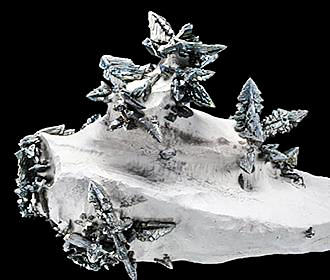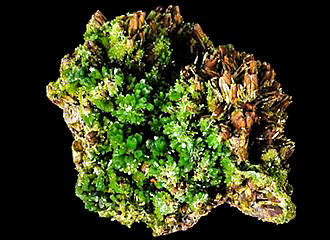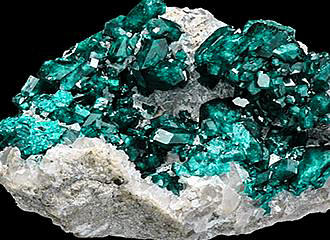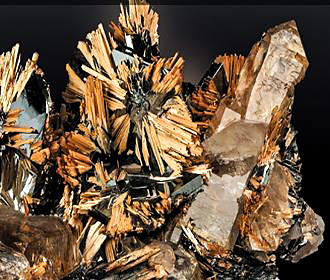Paris Galerie de Mineralogie et de Geologie Museum
Having been renovated and reopened in 2013, the Paris Galerie de Mineralogie et de Geologie Museum or Gallery of Mineralogy and Geology Museum has many different exhibits on display including prestigious meteorites, through to large crystals from different continents and even includes historical jewellery including crown jewels, cut and uncut gems, plus much more that tells the story of earth and the solar system, having one of the largest collections in the world.
About the Galerie de Mineralogie et de Geologie Museum
The first collection of minerals began back in 1625 when those that had medicinal properties were brought to the royal garden of medicinal plants, which since the French Revolution has been known as the Jardin des Plantes.
Over the years the collection of different minerals grew substantially under the orders of the king, and a gallery was first opened to the public back in 1745, however, the building you can see today was constructed almost a century later, and was specifically designed to be the Paris Galerie de Mineralogie et de Geologie Museum.
The building for the museum was actually constructed back in 1833 and is now classed as one of the historical Paris monuments, which was designed in a neoclassical style approximately 187 metres in length with two columned porticos and its impressive Corinthian columns inside.
On the exterior facade you can still see an inscription on the portico pediment to the right hand side of this Paris museum that reads Mineralogie Bibliotheque, and although the library has since gone, the hall itself behind this is still decorated with paintings by Francois Auguste Biard, which depict expeditions to the North Pole in the 19th century.
Yet on the left hand side of the building as though you were looking at it from the beautiful Roserie Garden, are where the reserves of paleobotany and mineralogy are held. In the centre you have the naive with its Corinthian columns, and being approximately 100 metres long, this holds a major part of the Paris Galerie de Mineralogie et de Geologie collections, which are now estimated at over 750,000 specimens.
A partial reopening of the Paris Galerie de Mineralogie et de Geologie Museum reopened in 2013 after major renovations had taken place, that includes the room dedicated to crystals and the exceptional collection it has, which allows the visitor to discover the vast range of different shapes, colours and forms.
Other aspects of the Paris Galerie de Mineralogie et de Geologie Museum have opened since, and you can now discover meteorites and other particles that have fallen from the sky along with minerals in their natural form, which are also a delight for people with a scientific background.
Yet there are also the pieces on display within the room of the giant crystals, and this collection is one of the most prestigious in the world. Plus there are cut and uncut gem stones and ornamental stones, along with historical jewellery and carvings, some of which are displayed within themed alcoves that illustrate their diversity of different shapes and colours, etc.
You will also find one very impressive showcase that holds gems and crown jewels for the historical and imperial collections, which includes items such as the Grand Sapphire of King Louis XIV and the Great Opel of King Charles X. Another part is dedicated to the story of the Blue Diamond, which was stolen during the French Revolution.
There are actually over 130,000 specimins that make up the Galerie de Mineralogie et de Geologie Museum's collection, making this one of the largest in the world, including mineral specimens from the King's medicine chest dating from 1626, which is located within a timeline chronolgical section of historical events.
Visiting the Paris Galerie de Mineralogie et de Geologie
You will find that the Paris Galerie de Mineralogie et de Geologie Museum is open from 10am through to 6pm on a Monday and Wednesday through to Sunday, yet is always closed on a Tuesday and certain national French holidays such as 1st May.
The normal cost of entry is €7 as of 2020, however there is free entry for those that are disabled or those under the age of 25 that reside within the EU upon proof of eligibility.
A reduced rate is also available for certain people including if you have purchased a full price ticket for another attraction within the Jardin des Plantes or the Musee de l'Homme at the Palais de Chaillot, but we would like to point out that this has to have been purchased within the last 3 months, plus the ticket office closes a minimum of 45 minutes prior to closing time of the museum.
Now when it comes to getting to this Paris museum, as we have already mentioned, the Galerie de Mineralogie et de Geologie museum is located within the Jardin des Plantes, which is situated in the 5th Arrondissement of Paris ver close to the River Seine, and there is a Batobus dock for the water bus shuttle service close by.
Yet if you are travelling via the Paris Metro you would need the Gare d’Austerltz stop via lines 5 and 10, the Censier - Daubenton stop via line 7 or the Jussieu stop serving lines 7and 10, however the Gare d’Austerlitz train station also serves RER line C of the RER trains.
But the Paris bus numbers 24, 57, 61, 63, 67, 89, 91 and 215 along with the Noctilien Night Bus Service via Lines N01, N02 and N31 will also get you close to the Galerie de Mineralogie et de Geologie and other Paris tourist attractions in the area, not forgetting that some of the bus tours in Paris such as Paris TootBus tours, also have a stop within walking distance as well.



